Washington, also known as the Evergreen State, has flora and fauna just about everywhere you look. With stunning mountains, towering forests, and plenty of swimming holes, there’s something special about this state in the Pacific Northwest.
With 28,000 miles of shoreline, it’s safe to say there’s plenty of marine life in Washington. Today we’re taking a look at some of the deadliest and most dangerous creatures lurking in the ocean waters on the coast of Washington.
Are the Coastal Waters Near Washington State Dangerous?

©digidreamgrafix/Shutterstock.com
The coastal waters of Washington are treasures that are brimming with beauty and delights to explore. They are also changing circumstances that contain a fair amount of risk. Even calm ocean waters can be misleading! One of the biggest dangers at the beach is the cold water. Regardless of whether you intend to swim, be ready in case you end yourself doing so by accident.
In Washington’s icy waters, even a few minutes can be fatal. These swift and powerful ocean currents are additionally referred to as rip tides. They may rapidly endanger a swimmer.
It’s fun to take a short stroll on the beach. But it may also have some risks of its own. Sneaker waves are one of those; they are sudden torrents of ocean water.
A List of the Most Dangerous Animals in the Ocean Near Washington State
Great White Sharks
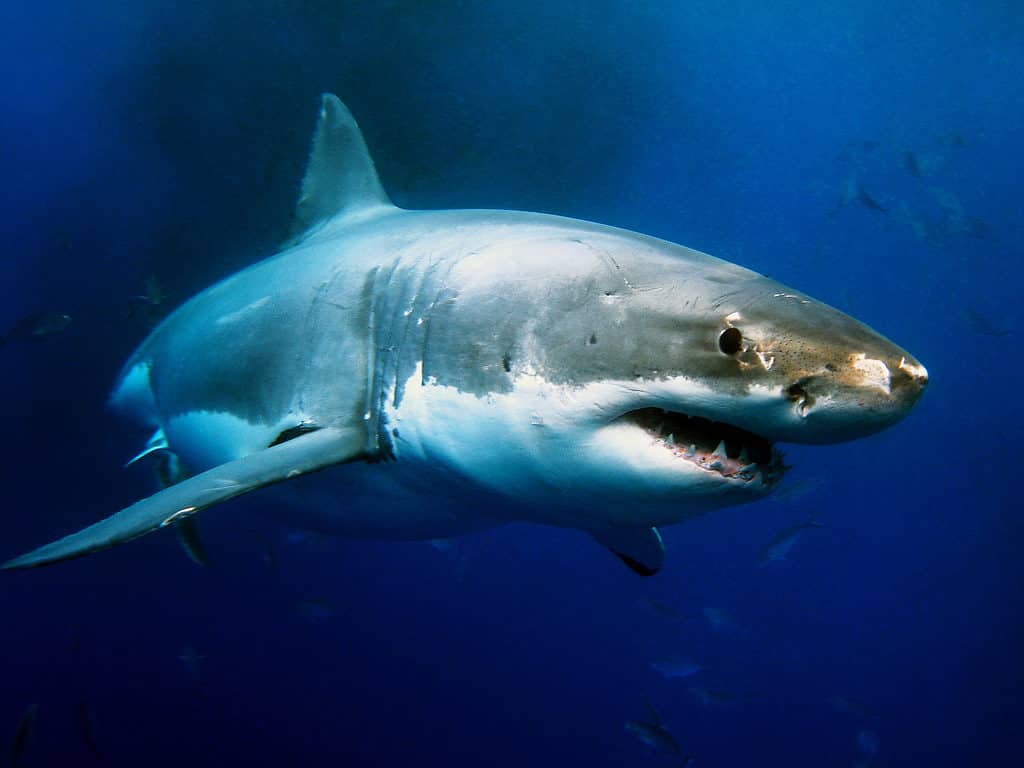
Great white sharks are feared among fish in the ocean.
©iStock.com/Whitepointer
Although you’re unlikely to find one of these apex predators in Puget Sound, you can find them along the nearby coast. The bulk of great white shark attacks takes place in regions with dense populations of seals, making them unlikely to attack a human.
Although the white shark may dive as deep as 6,150 feet, it is most frequently spotted at the ocean’s surface. White sharks, especially young ones, are regularly spotted in summertime shallow close to shore off Southern California and in warm waters throughout the winter.
The number of great white sharks in the state of Washington is unknown because they are a migratory species and their numbers can vary significantly. Nevertheless, relative to other parts of the world, it is thought that Washington’s waters have a comparatively small population of these feared creatures.
Blue Shark
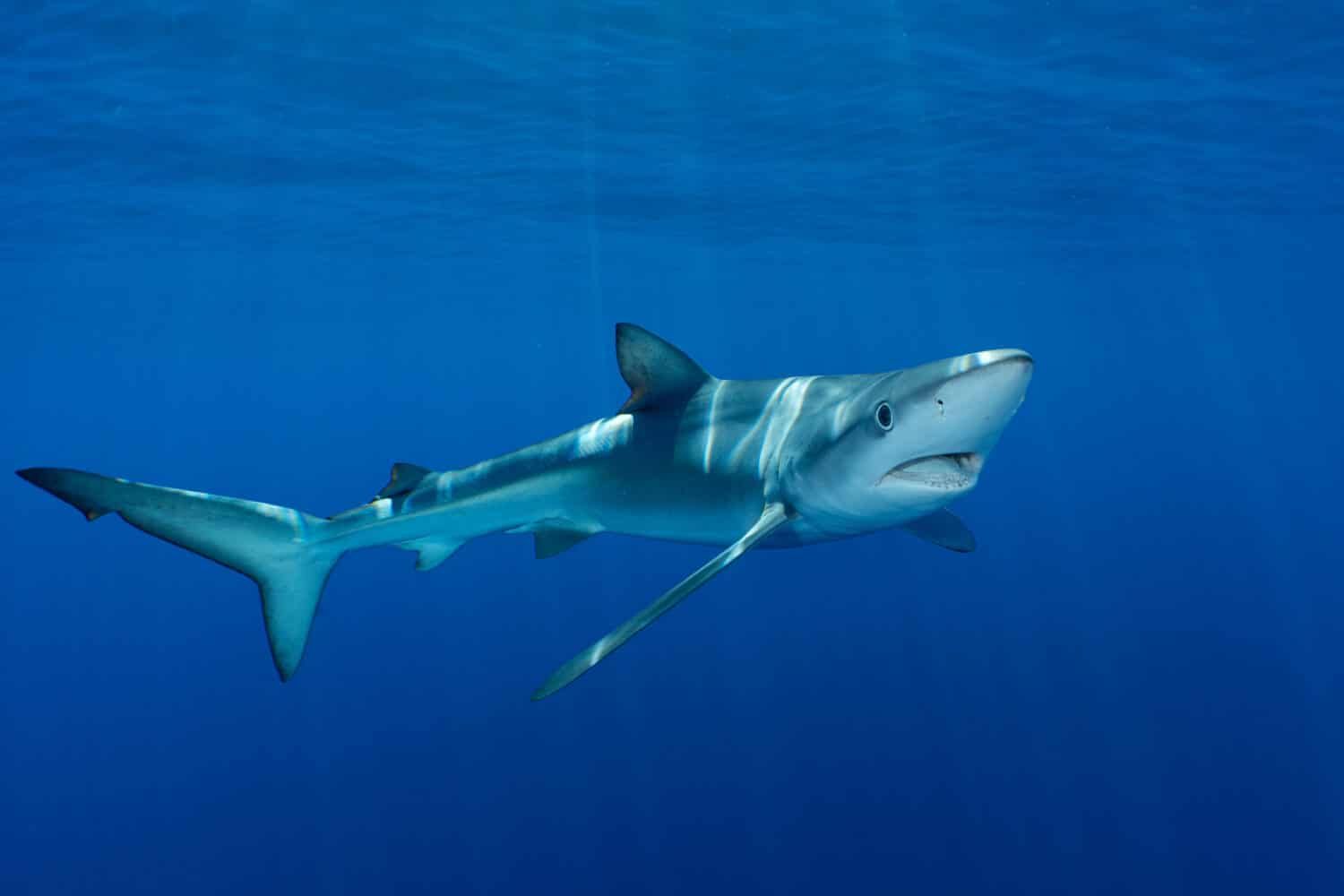
Blue sharks mostly eat fish, squid, and seals.
©Samy Kassem/Shutterstock.com
The blue shark is one of the most prevalent sharks in the world. The blue shark, which gets its name from its deep azure coloration, is stunning with its slim physique and size despite not being as fierce or massive as the infamous Great White.
Since it moves about over its lifetime, the blue shark is considered a migratory aquatic predator. The predator rather cruises across deeper seas. One would assume that the blue shark could and would consume almost everything it desired given that sharks are at the apex of the marine food chain.
Blue sharks occasionally eat the remains of dead whales and porpoises due to their remarkable capacity to detect blood in the water. Despite being exceedingly uncommon, blue shark attacks on people have been documented. There have been 25 recorded non-fatal blue shark attacks on people worldwide, compared to four verified fatal attacks.
Rockfish
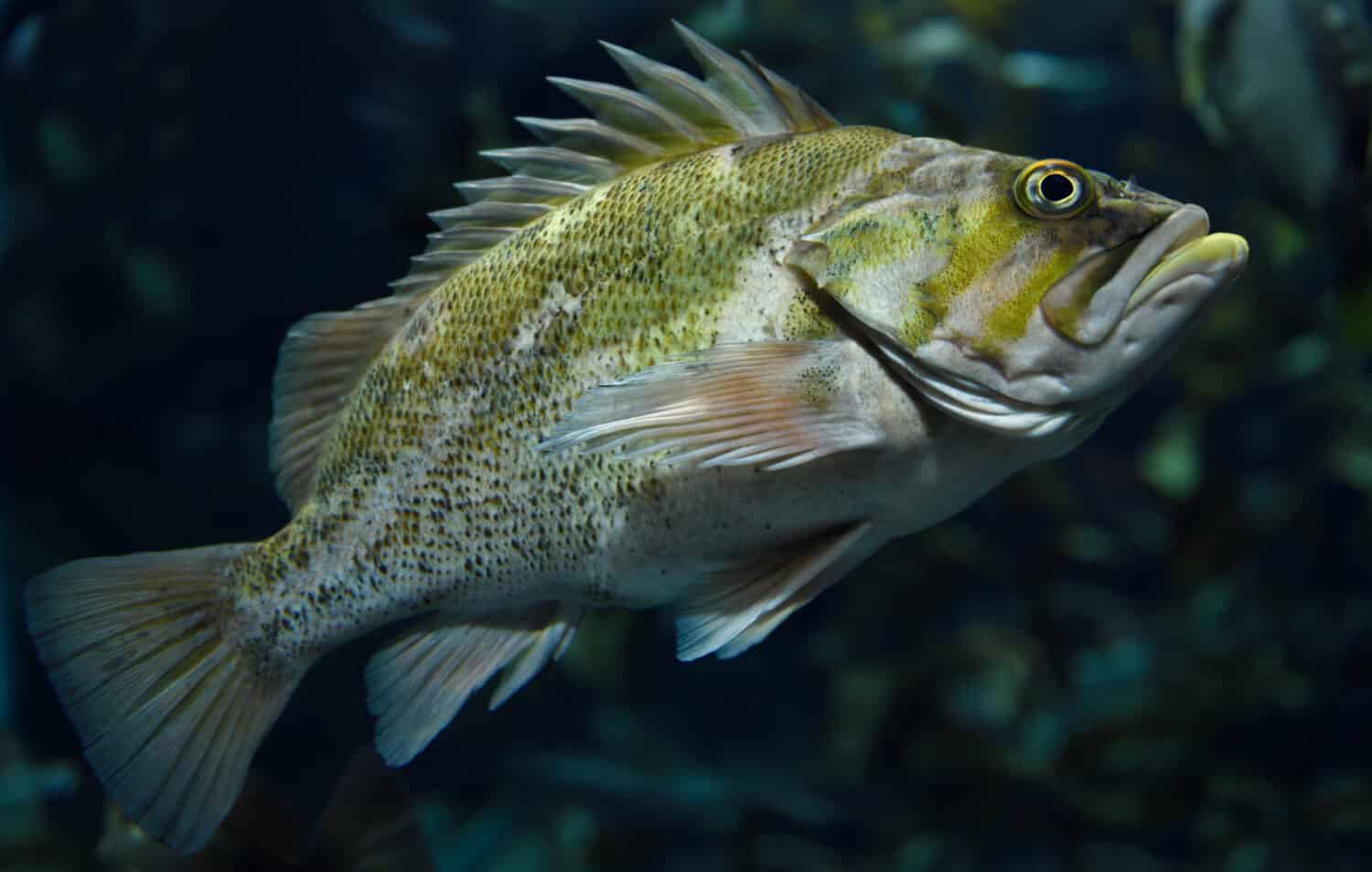
There are over 100 species of rockfish!
©Reimar/Shutterstock.com
If sharks don’t scare you, how do you feel about a venomous fish swimming in the ocean waters near Washington? Numerous ecosystems are home to rockfish. Some inhabit jagged reefs or sea floors in shallow seas close to shore.
Others are found in the water column or on the deep ocean floor. Rockfish and other members of the Scorpaenidae family have poisonous spines on their fins. For stonefish, the venom is extremely toxic, whereas, for rockfish, it is only mildly hazardous.
You may experience a lot of pain and even an infection if you touch a rockfish. They are also found in swimming areas such as Puget Sound.
Sunflower Sea Star

With the ability to swallow sea urchins whole, sunflower sea stars are formidable creatures.
©NatureDiver/Shutterstock.com
With a name like sunflower sea star, what could go wrong? It can be distinguished from other sea stars by its arrangement of 24 arms. This creature is a ravenous hunter for a sea star. The sunflower star bounces around on its 15,000-tube feet while searching for food, traveling at the astounding rate of more than 40 inches per minute.
A sunflower sea star has the ability to swallow whole sea urchins, digest them inside, and then eject the shell. Although they aren’t dangerous to humans, you wouldn’t want to be a sea urchin living in the waters off of Washington.
Blue-Ringed Octopus
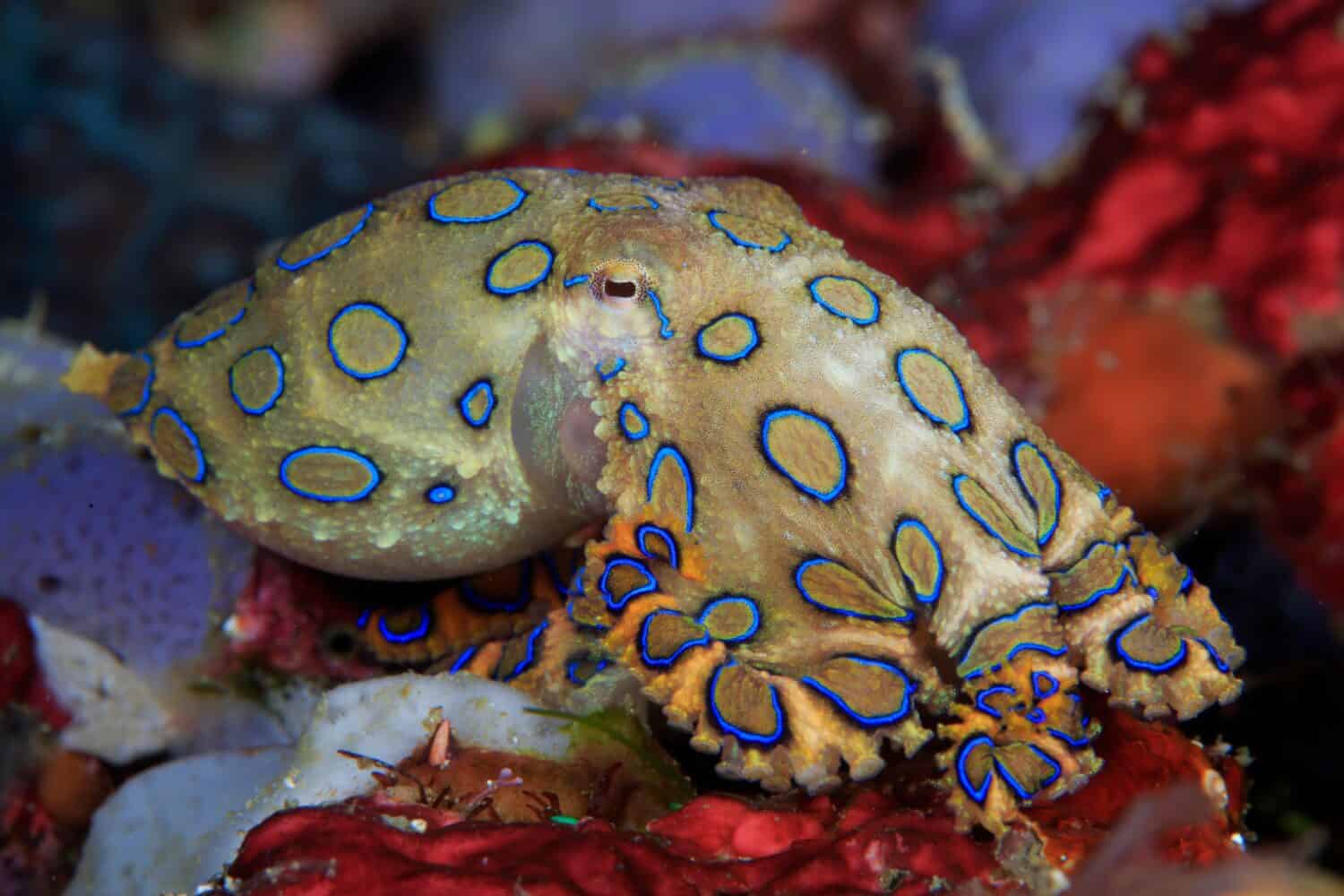
These octopi grow to the size of a ping pong ball.
©Thierry Eidenweil/Shutterstock.com
During the height of summer, a giant blue-ringed octopus was discovered in the shallows of a well-liked beach on Washington’s mid-west coast. The blue-ringed octopus appears very innocent at first glance.
It appears less ominous and cuter thanks to its pint-sized body and kaleidoscopic colors. But don’t be fooled by its cute appearance; this small octopus is capable of killing you. The sandy floor of modest tide pools and coral reefs is where you can find the blue-ringed octopus.
These creatures frequently conceal themselves in cracks, shells, or underwater debris when not searching for food or a mate. All octopuses are poisonous, but the blue-ringed octopus stands out among the rest. This powerhouse has venom 1,000 times more potent than cyanide, and it can kill 26 people in minutes.
It’s not surprising that it’s regarded to be among the ocean’s most deadly creatures.
Jellyfish
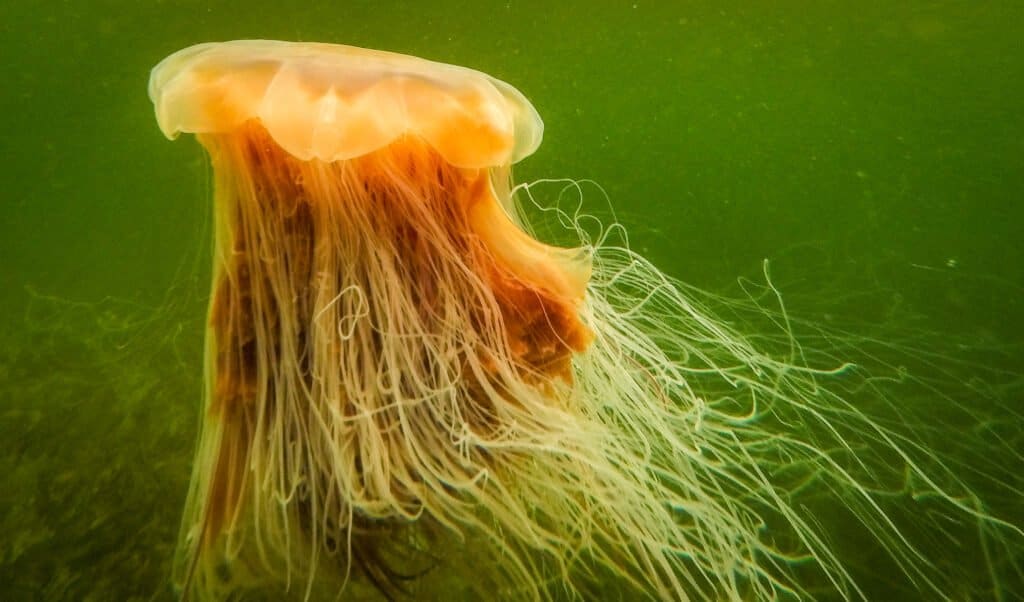
The lion’s mane is the world’s largest jellyfish
©Sunart Media/Shutterstock.com
In the summer, jellyfish “smacks,” or mass gatherings, are frequent in the waters off the coast of the Evergreen State. The amount of jellyfish seems to be increasing. In the autumn of 2014 and the summer of 2015, the South Puget Sound finger inlets of Budd Inlet and others achieved unprecedented amounts of jellyfish biomass, which coincided with the “Blob,” a region of exceptionally warm water flowing in from the Pacific.
Lion’s Mane is the main type of jellyfish you’d want to steer clear of in Washington waters. The mouth is located on the underside of the bell and is encircled by eight groups of up to 150 tentacles each. Nematocysts carrying poison are attached to these tentacles, and when prey is engulfed in them, they stun them. Humans may experience severe discomfort from the sting of the lion’s mane jellyfish.
Killer Whale
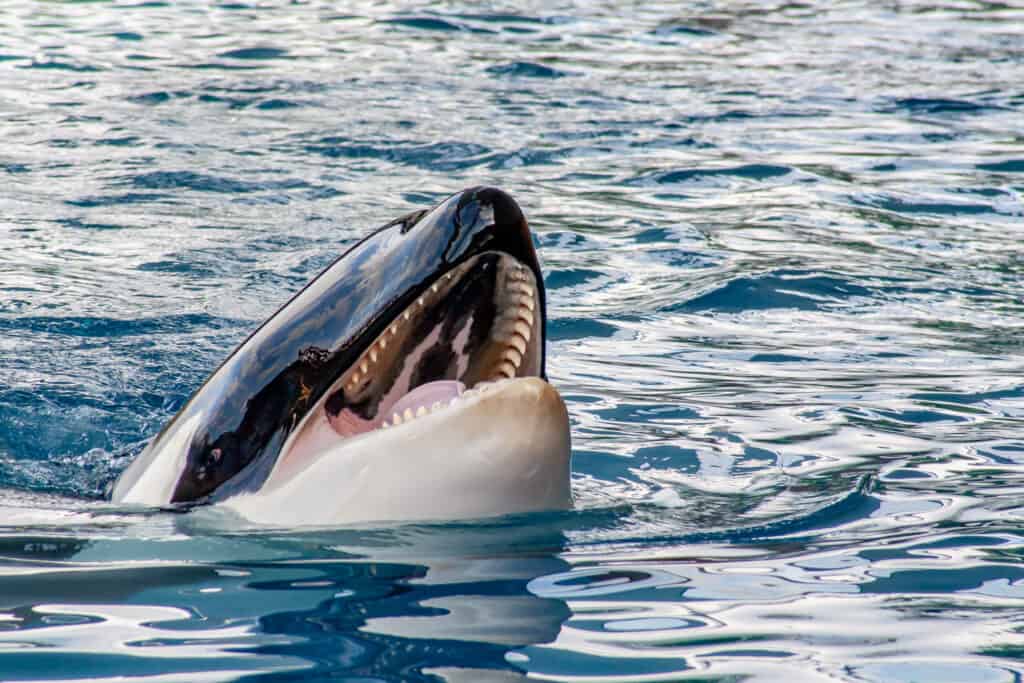
If you spot an orca, you’ll know it from its distinct appearance.
©Guillermo El Oso/Shutterstock.com
Since they can potentially be located in every ocean, orcas, also called killer whales, are the most extensively dispersed whale and dolphin species. They are easily recognizable thanks to their black-and-white appearance.
A male orca can grow to be approximately 33 feet long and weigh 22,000 pounds. Swimming at speeds of up to 33.5 miles per hour, orcas are known to be incredibly fast swimmers. In Washington, migratory and offshore whales often only make up minor parts of the overall population.
Whale watching is a popular activity for both locals and tourists throughout the state. Although killer whales aren’t necessarily dangerous to humans, other animals wouldn’t want to be in their path.
Striped Surgeonfish

Don’t let their cute looks fool you – these fish are venomous!
©Aleksei Alekhin/Shutterstock.com
Let us introduce you to the striped surgeonfish. The coloration of the Striped Surgeonfish makes it simple to identify. Black-edged, blue, and yellow stripes decorate the top third of the head and body. It is one of the most striking and ferocious surgeonfishes that exists.
They generally live on open coral reefs in tropical and subtropical regions. This fish, with the exception of the breeding season, is territorial. It is claimed that they can visually be spotted protecting their region.
Swimming, swirling, and inciting or pursuing other fish are only a few of their intraspecific behaviors. A striped surgeonfish’s caudal spine is venomous, so keep your distance from this harmful fish.
Western Diamondback Rattlesnake
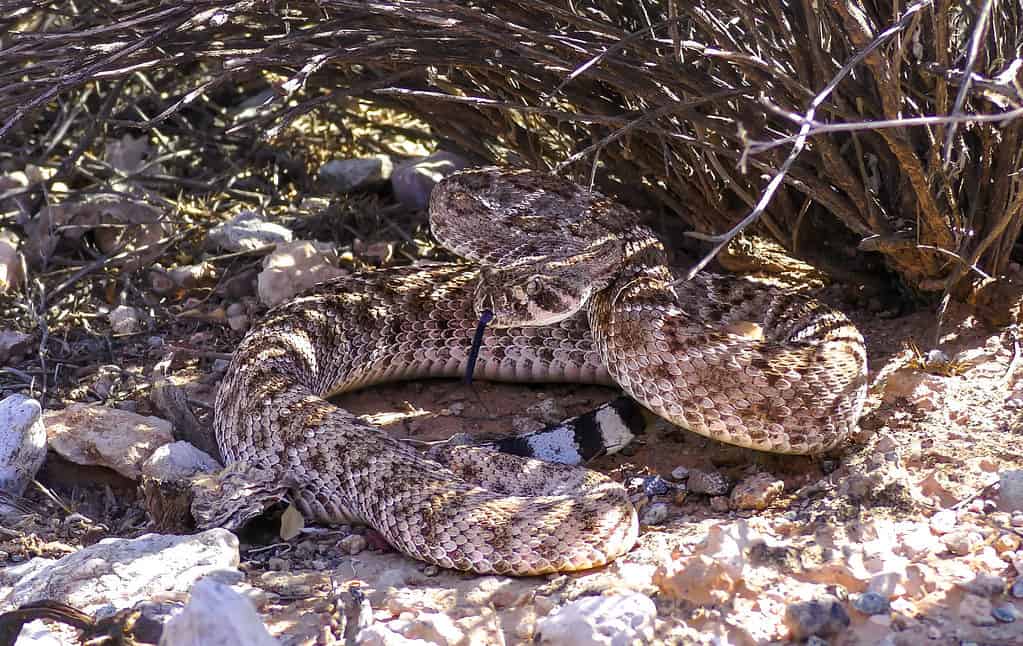
If you hear this snake rattling, it’s time to get out of dodge!
©iStock.com/Banu R
Native to North America, the Western rattlesnake is a type of venomous pit viper. You can find this snake all throughout Washington State, including the waters. Although they usually reside on the ground, western rattlesnakes can scale into bushes or trees.
They live alone and are typically not aggressive. Western Diamondback Rattlesnakes usually measure between four and six feet long as adults. When pursuing food, rattlesnakes have been known to swim over water or make a short ascent into a tree.
If you spot one of these snakes in or near the water, slowly get out of the area. In the US, this species of snake kills more people than any other. They tend to be defensive rather than pursuing whatever is getting too close.
Summary of the Most Dangerous Animals in the Ocean Near Washington State
Here is a list of dangerous animals that live in or around the ocean coast of Washington:
| Animal | |
|---|---|
| #1 | Great White Shark |
| #2 | Blue Shark |
| #3 | Rockfish |
| #4 | Sunflower Sea Star |
| #5 | Blue-Ringed Octopus |
| #6 | Jellyfish |
| #7 | Killer Whale |
| #8 | Striped Surgeonfish |
| #9 | Western Diamondback Rattlesnake |
The photo featured at the top of this post is © Tory Kallman/Shutterstock.com
Thank you for reading! Have some feedback for us? Contact the AZ Animals editorial team.






